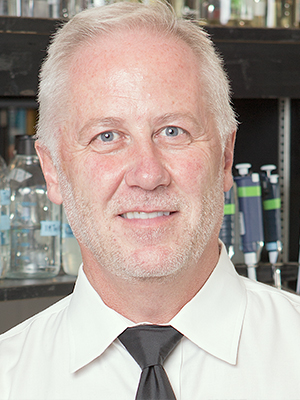Rare diseases: More common than you think

Dr. Christopher McMaster, Scientific Director, CIHR Institute of Genetics
Most rare diseases are inherited, meaning they are passed down from parents to their children. Generally referred to as “orphan" or “rare” diseases, each of the almost 7,000 inherited diseases are due to the same problem: a mutation in a single gene in a person’s genome. Due to their individual rarity, inherited diseases have not traditionally been a focus for research into treatments.
That fact is, inherited “rare” diseases are not rare. Studies from the European Union and the USA estimate that one in 25 children is born with a “rare” inherited disease. Most inherited diseases affect children. Of these, only 5% of these diseases have a treatment, and there is rarely a cure. Sadly, one-third of children with an inherited disease do not live to see their fifth birthday.
Within our healthcare system, children with inherited diseases are usually reported and recorded based on their symptoms (neurology, cardiology, metabolic, etc.) versus the real cause of their illness—a single gene mutation resulting in an inherited disease. This means that we cannot accurately find and track children with an inherited disease within our healthcare system. That said, it is estimated that one in four pediatric hospital beds is occupied by a child with an inherited disease, and account for approximately forty percent of pediatric hospital costs.
These staggering statistics make inherited diseases a major challenge that Canadian researchers are working hard to tackle.
For the first time, there is a way forward to “un-orphan” these children
In the past, due to each inherited disease’s individual rarity, a diagnosis cost an average of $20,000 and took between five to seven years to diagnose: an eternity for anxious families to wait. In 2003 the first human genome was completed. It took over ten years and cost $3 billion. Today, a human genome can be completed in a day for a mere $900. Over the past decade we have moved from knowing 100 genes that cause an inherited disease to more than 5,000.
Now, human genome (all the genes in the human body) sequencing has progressed at a dizzying rate over the past decade, and has relegated this to an issue of the past. For the first time, we can find (rapidly and cost effectively) diagnose children with an inherited disease. The amazing decrease in cost and accompanying increase in the speed of sequencing a human genome is changing the diagnostic paradigm for children with an inherited disease.
The largest pediatric healthcare burden in Canada
Accurate numbers within the Canadian healthcare context for children with an inherited disease are lacking, as are the broader socio-economic costs borne by these kids and their families. This lack of data has made the socio-economic burden of inherited disease, both in terms of direct cost to the healthcare system and indirect costs, next to impossible to determine.
Accurate documentation of direct costs to the healthcare system, and socioeconomic costs to patients, parents, and society, are essential pieces of information required to drive the appropriate level of attention and research (for diagnosis and treatment) toward children with inherited disease.
Human genome sequencing is enabling us to finally account for children with an inherited disease, allowing us to determine the socioeconomic burdens of inherited disease in Canada and around the world. The evidence shows the immensity of inherited, so called “rare”, diseases to Canadian children and our healthcare system. Indeed, if a child with a rare disease is not counted, they do not count.
- Date modified: